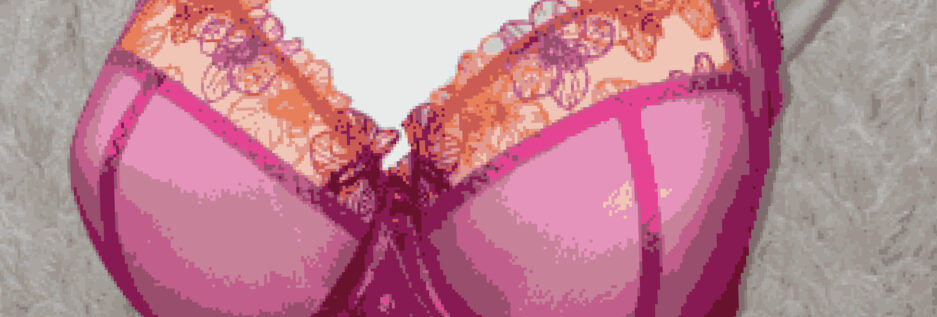After working on drafting a bra from measurements, my work wasn’t done with the draft. The next step is to use that draft and make a pattern. Let me show you a little of the progression so far.
Drafting
Here’s the draft. It doesn’t look anything like the pieces I’ve seen in bra patterns.

Horizontal Seam
Then, a few more steps and things start to look more familiar. Beverly takes you through it all in her manual. Take a look at these pieces. These actually look like bra pattern pieces.

I’m not the biggest fan of a horizontal seams. I used one when I made my Heather bra.
Common Bra Seams
Here are some different seams shown in bras (photos are from Bra-Makers Supply and Sewy):

Vertical Seam
I’ve also tried the vertical seam when I made KS 3300. Once I started making my own patterns from the draft, I had to try each pattern. This part of the process was definitely fun for me. The photo of the vertical seam is from the Sewy website. It’s their Linda bra pattern.
Diagonal Seam
My favorite seam in bra-making so far has been the diagonal seam. That’s the bottom left in the photo collage above. A diagonal seam is what we find in the Classic pattern or the Shelley pattern from Pin-Up Girls patterns.
I also love the power bar and split lower cup on the Shelley. Here are a few of my favorites from that pattern.

I love this pattern, and know I will make it using my drafted pattern!
Curved Seam
The one I really wanted to try was the curved seam. All the gorgeous Cloth Habit Harriet bras I’m seeing were making me want to buy that pattern too. I had to be very strict with myself not to buy yet another pattern I have. The photo in the first collage is from Sewy again. It’s their Isabell pattern, which I have. I also have a clone of a Fantasie bra that is a curved seam too. I didn’t need one more pattern, but I was tempted! However, I did want to make one when I was making the patterns.

Patterns I Made
Here are all my new patterns. I just need to add seam allowances to some of them, and make little changes like adjusting for a flat spot, thinning the band under the cradle, and lowering the bridge.

I also drafted my a new cradle and band.

Happy Creating!
P.S. You may also be interested in Sewing Bras: Foam Lace & Beyond.

Here’s some exciting news.
Merckwaerdigh
The news is from Merckwaerdigh’s Etsy shop. Here’s what Margreet said in her post on Facebook: “SPRING … a perfect time for a major change! As of today all listings in the Merckwaerdigh shop at Etsy are FREE SHIPPING!!!“
She is raising her cost a bit, but what she is adding to the costs will still be lower than shipping costs! Yay!

















 Here are the back and side.
Here are the back and side.






 Happy creating!
Happy creating!